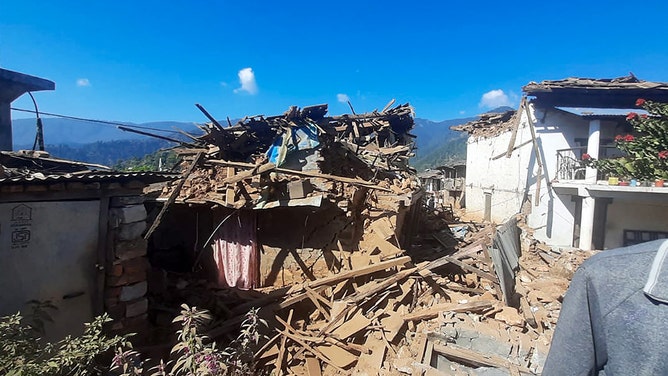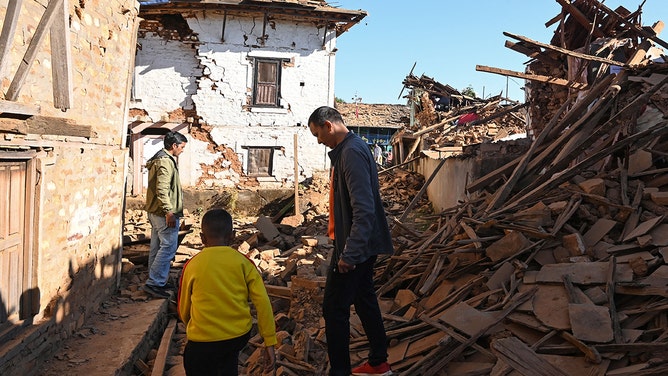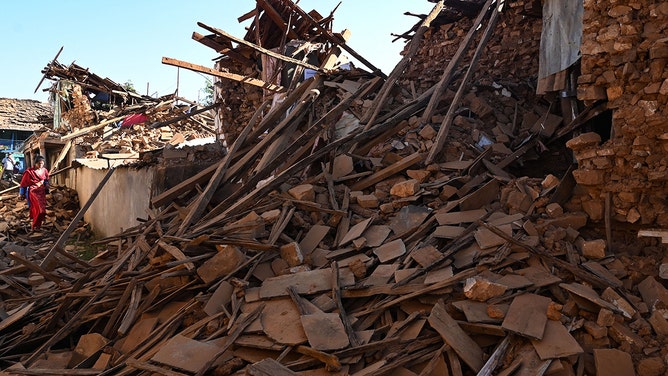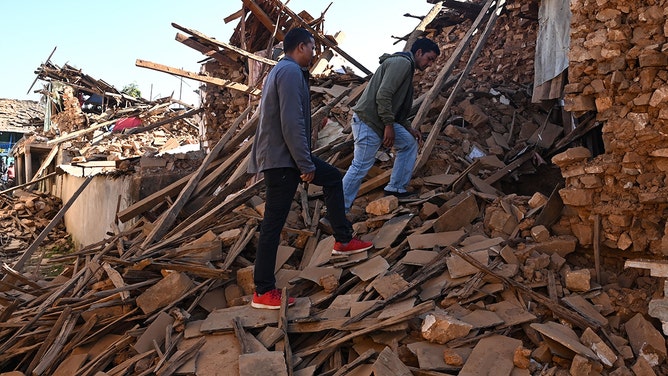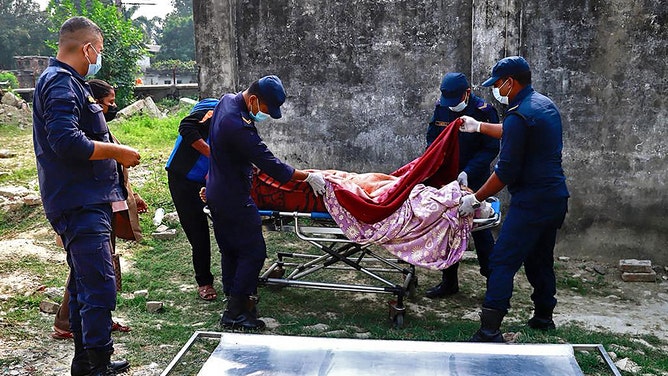Nepal earthquake kills over 150; death toll expected to rise as rescue efforts continue
The U.S. Geological Survey recorded a magnitude 5.6 earthquake at 11:47 p.m. Friday local time, followed by an aftershock at 4:16 a.m. Saturday registering a magnitude of 4.0. The epicenter of the earthquake and its aftershock were detected in the Jajarkot district.
Crews still searching for survivors after deadly earthquake in Nepal
At least 157 people were killed in an earthquake in Nepal, and crews are struggling to search through the rubble of collapsed buildings for people who may have survived the disaster.
JAJARKOT, Nepal – A magnitude 5.6 earthquake struck northwestern Nepal on Friday night, killing over 150 people. First responders are now reaching the hilly area near the epicenter, with fears the death toll may rise.
Citing local officials, Reuters reported that at least 157 people have died, with dozens more injured, as the quake shook buildings as far away as New Delhi in India.
"The number of injured could be in the hundreds, and the deaths could go up as well," Jajarkot District Official Harish Chandra Sharma told Reuters by phone.
The U.S. Geological Survey (USGS) recorded a magnitude 5.6 earthquake at 11:47 p.m. Friday local time, followed by an aftershock at 4:16 a.m. Saturday registering a magnitude of 4.0. The epicenter of the earthquake and its aftershock were detected in the Jajarkot district.
Officials said the poor quality of construction and the fact that the quake struck while people slept would likely result in extensive damage and a high death toll despite its lower magnitude, Reuters reported.
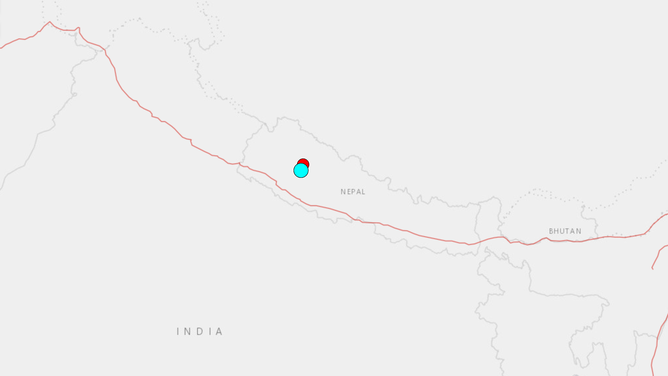
Map showing locations of earthquake (blue) and aftershock (red) in Nepal. Nov. 3, 2023.
(USGS)
Nepal's prime minister said in a post on X, formerly Twitter, that security agencies have been mobilized to respond to the disaster.
"Preparations are being made to send medicine, medical personnel and a helicopter to rescue the injured," a translation of the message read.
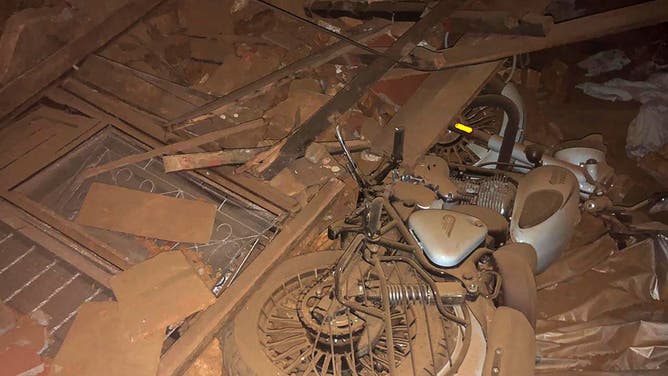
A motorcycle and broken windows are seen in the midst of the rubble in the aftermath of an earthquake in Jajarkot on November 4, 2023.
(BALKUMAR SHARMA/AFP / Getty Images)
Home to the Himalayas, Nepal regularly experiences seismic activity.
According to the USGS, the country is between the Eurasian and Indian tectonic plates. The collision of the two plates over tens of millions of years produced some of the world's most gargantuan mountains, such as Mount Everest.
This tectonic movement makes the region vulnerable to earthquakes, floods and landslides, according to the U.S. Agency for International Development.

